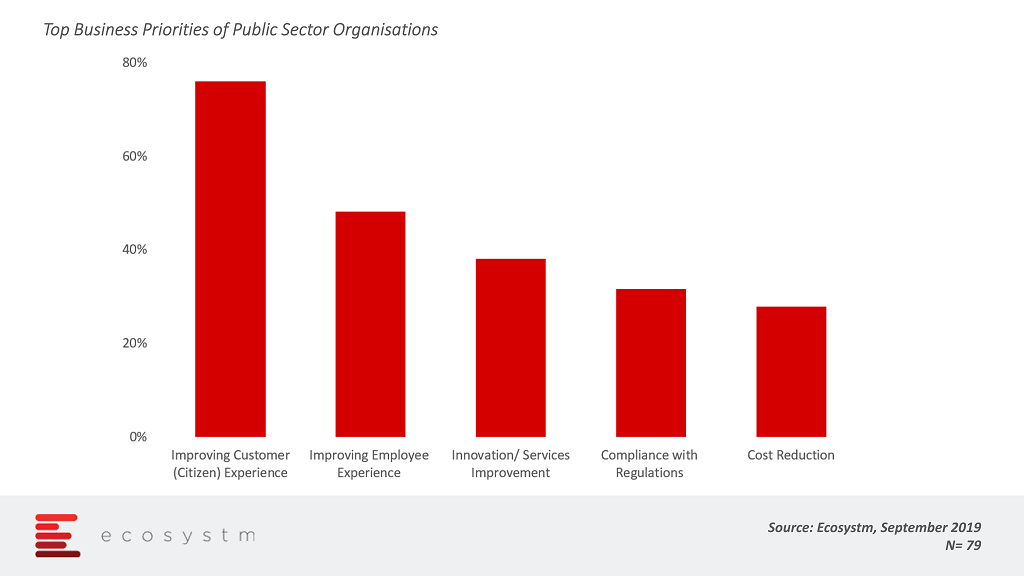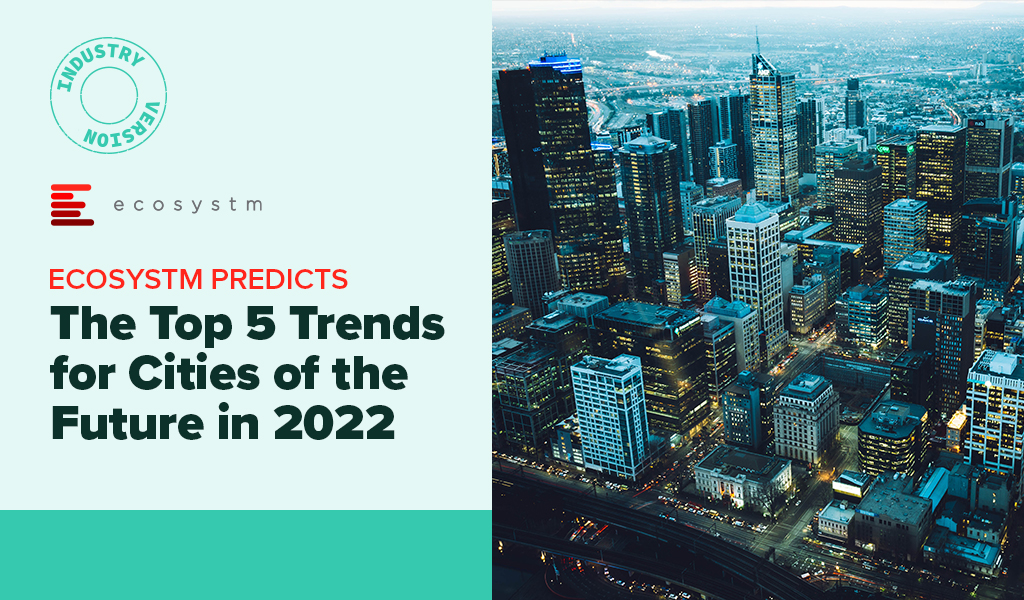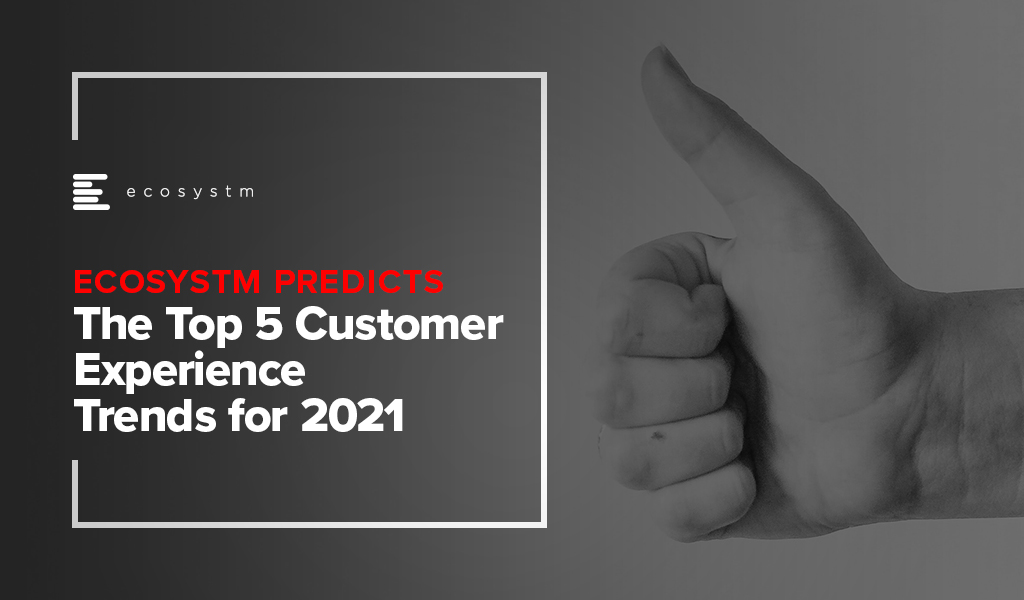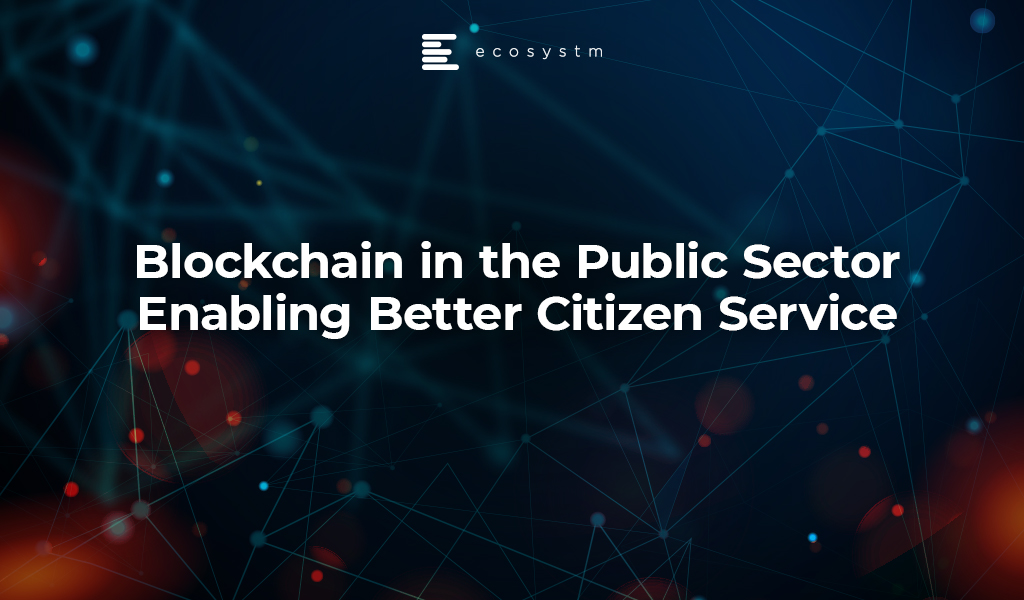Technology is reshaping the Public Sector worldwide, optimising operations, improving citizen services, and fostering data-driven decision-making. Government agencies are also embracing innovation for effective governance in this digital era.
Public sector organisations worldwide recognise the need for swift and agile interventions. With citizen expectations resembling those of commercial customers, public sector organisations face mounting pressure to break down the barriers to provide seamless service experiences.
Read on to find out how public sector organisations in countries such as Australia, Vietnam, the Philippines, South Korea, and Singapore are innovating to stay ahead of the curve; and what Ecosystm VP Consulting, Peter Carr sees as the Future of Public Sector.
Click here to Download ‘The Future of the Public Sector’ as a PDF

Organisations are moving beyond digitalisation to a focus on building market differentiation. It is widely acknowledged that customer-centric strategies lead to better business outcomes, including increased customer satisfaction, loyalty, competitiveness, growth, and profitability.
AI is the key enabler driving personalisation at scale. It has also become key to improving employee productivity, empowering them to focus on high-value tasks and deepening customer engagements.
Over the last month – at the Salesforce World Tour and over multiple analyst briefings – Salesforce has showcased their desire to solve customer challenges using AI innovations. They have announced a range of new AI innovations across Data Cloud, their integrated CRM platform.
Ecosystm Advisors Kaushik Ghatak, Niloy Mukherjee, Peter Carr, and Sash Mukherjee comment on Salesforce’s recent announcements and messaging.
Read on to find out more.
Download Ecosystm VendorSphere: Salesforce AI Innovations Transforming CRM as a PDF

Cities worldwide have been facing unexpected challenges since 2020 – and 2022 will see them continue to struggle with the after-effects of COVID-19. However, there is one thing that governments have learnt during this ongoing crisis – technology is not the only aspect of a Cities of the Future initiative. Besides technology, Cities of the Future will start revisiting organisational and institutional structures, prioritise goals, and design and deploy an architecture with data as its foundation.
Cities of the Future will focus on being:
- Safe. Driven by the ongoing healthcare crisis
- Secure. Driven by the multiple cyber attacks on critical infrastructure
- Sustainable. Driven by citizen consciousness and global efforts such as the COP26
- Smart. Driven by the need to be agile to face future uncertainties
Read on to find out what Ecosystm Advisors, Peter Carr, Randeep Sudan, Sash Mukherjee and Tim Sheedy think will be the leading Cities of the Future trends for 2022.
Click here to download Ecosystm Predicts: The Top 5 Trends for Cities of the Future in 2022

In 2020, much of the focus for organisations were on business continuity, and on empowering their employees to work remotely. Their primary focus in managing customer experience was on re-inventing their product and service delivery to their customers as regular modes were disrupted. As they emerge from the crisis, organisations will realise that it is not only their customer experience delivery models that have changed – but customer expectations have also evolved in the last few months. They are more open to digital interactions and in many cases the concept of brand loyalty has been diluted. This will change everything for organisations’ customer strategies. And digital technology will play a significant role as they continue to pivot to succeed in 2021 – across regions, industries and organisations.
Ecosystm Advisors Audrey William, Niloy Mukherjee and Tim Sheedy present the top 5 Ecosystm predictions for Customer Experience in 2021. This is a summary of the predictions – the full report (including the implications) is available to download for free on the Ecosystm platform.
The Top 5 Customer Experience Trends for 2021
- Customer Experience Will Go Truly Digital
COVID-19 made the few businesses that did not have an online presence acutely aware that they need one – yesterday! We have seen at least 4 years of digital growth squeezed into six months of 2020. And this is only the beginning. While in 2020, the focus was primarily on eCommerce and digital payments, there will now be a huge demand for new platforms to be able to interact digitally with the customer, not just to be able to sell something online.
Digital customer interactions with brands and products – through social media, online influencers, interactive AI-driven apps, online marketplaces and the like will accelerate dramatically in 2021. The organisations that will be successful will be the ones that are able to interact with their customers and connect with them at multiple touchpoints across the customer journey. Companies unable to do that will struggle.
- Digital Engagement Will Expand Beyond the Traditional Customer-focused Industries
One of the biggest changes in 2020 has been the increase in digital engagement by industries that have not traditionally had a strong eye on CX. This trend is likely to accelerate and be further enhanced in 2021.
Healthcare has traditionally been focused on improving clinical outcomes – and patient experience has been a byproduct of that focus. Many remote care initiatives have the core objective of keeping patients out of the already over-crowded healthcare provider organisations. These initiatives will now have a strong CX element to them. The need to disseminate information to citizens has also heightened expectations on how people want their healthcare organisations and Public Health to interact with them. The public sector will dramatically increase digital interactions with citizens, having been forced to look at digital solutions during the pandemic.
Other industries that have not had a traditional focus on CX will not be far behind. The Primary & Resources industries are showing an interest in Digital CX almost for the first time. Most of these businesses are looking to transform how they manage their supply chains from mine/farm to the end customer. Energy and Utilities and Manufacturing industries will also begin to benefit from a customer focus – primarily looking at technology – including 3D printing – to customise their products and services for better CX and a larger share of the market.
- Brands that Establish a Trusted Relationship Can Start Having Fun Again
Building trust was at the core of most businesses’ CX strategies in 2020 as they attempted to provide certainty in a world generally devoid of it. But in the struggle to build a trusted experience and brand, most businesses lost the “fun”. In fact, for many businesses, fun was off the agenda entirely. Soft drink brands, travel providers, clothing retailers and many other brands typically known for their fun or cheeky experiences moved the needle to “trust” and dialed it up to 11. But with a number of vaccines on the horizon, many CX professionals will look to return to pre-pandemic experiences, that look to delight and sometimes even surprise customers.
However, many companies will get this wrong. Customers will not be looking for just fun or just great experiences. Trust still needs to be at the core of the experience. Customers will not return to pre-pandemic thinking – not immediately anyway. You can create a fun experience only if you have earned their trust first. And trust is earned by not only providing easy and effective experiences, but by being authentic.
- Customer Data Platforms Will See Increased Adoption
Enterprises continue to struggle to have a single view of the customer. There is an immense interest in making better sense of data across every touchpoint – from mobile apps, websites, social media, in-store interactions and the calls to the contact centre – to be able to create deeper customer profiles. CRM systems have been the traditional repositories of customer data, helping build a sales pipeline, and providing Marketing teams with the information they need for lead generation and marketing campaigns. However, CRM systems have an incomplete view of the customer journey. They often collect and store the same data from limited touchpoints – getting richer insights and targeted action recommendations from the same datasets is not possible in today’s world. And organisations struggled to pivot their customer strategies during COVID-19. Data residing in silos was an obstacle to driving better customer experience.
We are living in an age where customer journeys and preferences are becoming complex to decipher. An API-based CDP can ingest data from any channel of interaction across multiple journeys and create unique and detailed customer profiles. A complete overhaul of how data can be segregated based on a more accurate and targeted profile of the customer from multiple sources will be the way forward in order to drive a more proactive CX engagement.
- Voice of the Customer Programs Will be Transformed
Designing surveys and Voice of Customer programs can be time-consuming and many organisations that have a routine of running these surveys use a fixed pattern for the data they collect and analyse. However, some organisations understand that just analysing results from a survey or CSAT score does not say much about what customers’ next plan of action will be. While it may give an idea of whether particular interactions were satisfactory, it gives no indication of whether they are likely to move to another brand; if they needed more assistance; if there was an opportunity to upsell or cross sell; or even what new products and services need to be introduced. Some customers will just tick the box as a way of closing off a feedback form or survey. Leading organisations realise that this may not be a good enough indication of a brand’s health.
Organisations will look beyond CSAT to other parameters and attributes. It is the time to pay greater attention to the Voice of the Customer – and old methods alone will not suffice. They want a 360-degree view of their customers’ opinions.

Governments across the globe are realising the true potential of emerging technologies to provide better citizen services and to ensure transparency and accountability. Blockchain is one of the emerging technologies that is helping and will continue to help governments to achieve transformation. Government departments and agencies are being increasingly pushed to be collaborative and share data across agencies, while at the same time maintain the security of the data in their care. A distributed ledger that can share information based on agreed-upon protocols helps governments immensely in collaborating without losing accountability.
What are the key priorities of public sector organisations? The global Ecosystm CX study finds that citizens and employees are the top priorities for government agencies and departments.

Blockchain can help the public sector achieve many of its goals –
Improving Citizen Services
As more countries aim to be eGovernments, there is a need for real-time data access, information management, and fraud prevention. Blockchain is enabling governments to provide innovative services to citizens. It is possible now to decentralise the citizen database, reducing the time and cost of fetching records. Moreover, Blockchain enhances transparency and makes the highly regulated public sector audit-ready by creating a single source of truth for all connected devices and stakeholders.
One of the earliest use cases we see is in records management. Population records are useful for several agencies from healthcare to civil services to welfare departments. In Myanmar, UNICEF has collaborated with the industry to introduce a mobile birth and death registration system based on Blockchain. This digital mobile recording system is maintained on an integrated platform controlled by several parties who maintain birth and death records of Myanmar’s citizens and is a step towards achieving universal registration.
Citizen services such as notarisation, recording and time-stamping events, transactional real-estate contracts, online storing and verification of academic degrees, identity management and so on are benefiting from Blockchain deployment.
In Georgia, the government department of Land, Property and Housing Management is using Blockchain to maintain land and property records. The blockchain-based land registry allows speedier approvals with no involvement of paperwork or multi-party signatures on physical documents. This is enhancing service quality while offering better security measures as the data is digitally stored in the National Agency of Public Registry’s land title database.
Improving Employee Experience
Maintaining massive records about individuals, organisations, assets, activities, location and national information by the government department employees is a time-consuming process. In addition to this, managing and updating the ever-growing records is made more difficult by data silos and information management protocols and of course errors creep in.
Blockchain is streamlining the workflow and information management system at an individual as well as at a departmental level. In government departments, Blockchain can redefine processes by including events and agents in a block-based system where each activity can be easily managed and accounted for. This prevents issues such as miscounts, delayed processes and slipped deadlines.
The Chilean National Energy Commission has piloted a Blockchain platform to regulate the energy sector such as installed capacity, average market price, marginal costs, hydrocarbons and more. To implement this, first the energy data was stored on an Open Energy database which was then distributed across hundreds of secure servers countrywide. Later the employees verified anomalies which minimised their workload and made it convenient to edit the central database. The information added to open ledger is readily available to employees and citizens.
Compliance with Regulations
One of the primary benefits of Blockchain technology in the public sector is compliance. The transactions recorded on distributed ledgers are documented in a central ledger providing a comprehensive, precise, irreversible, permanent and secure trail. For instance, Blockchain is used to streamline cross-border compliance adherence by matching the data with the actual trade transactions. This creates an efficient and secure system ensuring real-time compliance, significant reduction of transaction costs, elimination of customs evasion and fraud from the outset.
In June, the Chinese Customs deployed its cross-border Blockchain compliance solution. The platform aims to increase efficiency by monitoring the flow of imports and exports and helping with risk assessments and document management. As transaction information can be stored safely and transparently on a Blockchain, the platform enables easy identification of documents to be checked, making compliance easier.
Data Management and Privacy
Blockchain acts as a default record keeper for society and governments and prevents the data from being misused by criminals and hackers. Through the responsible deployment of Blockchain data structures, governments can strengthen network security by reducing risks of single points-of-failure and preventing data breaches.
Democracy Earth – a Blockchain-based community has established a decentralised online governance platform, entirely built on open source technologies. The website helps users to cast votes on various policies based on tokens assigned to the users. This also minimises expenses and creates a secure information flow in a Blockchain-based voting system.
Government agencies, such as the U.S. Department of Homeland Security (DHS), are also getting serious about Blockchain applications in data management and privacy. DHS is funding R&D in Blockchain start-ups to explore new approaches to cybersecurity. The U.S. military is also utilising Blockchain (SIMBA Chain) to secure its military communication, messaging and applications. Blockchain is used for communication between ground troops and their headquarters. In addition to securing communications, the US Airforce is using Blockchain to track 3D printed components throughout their life cycle. With SIMBA, the top-secret printing blueprints are shared without much surveillance – this has enabled the Department of Defense to maintain a digital library of parts.
Cost Reductions
The government has clear citizen responsibilities and fulfilling them with a limited set of resources is one of the prime challenges for public departments. Reconciling expenditure with the budget is a time-consuming, and expensive procedure. Blockchain-based payment and accounting systems can help governments to reduce process costs by removing redundancies, streamlining processes, decreasing audit burden and ensuring systems integrity. By removing the requirement for third-party agencies to handle operations and maintain records, Blockchain technology is helping governments to reduce costs.
Blockchain is still an emerging concept with significant benefits. The Ecosystm IoT study finds that only 20% of public sector IT decision-makers are fully aware of the capabilities and limitations of Blockchain. Adopters and developers are still resolving the challenges. On the technology side, there are concerns on platform scalability, integration, standardisation and validation methods. On the management side, there are concerns about business models, transaction scale, maturity, and structure. However, government agencies will benefit immensely from the technology in the near future.



































